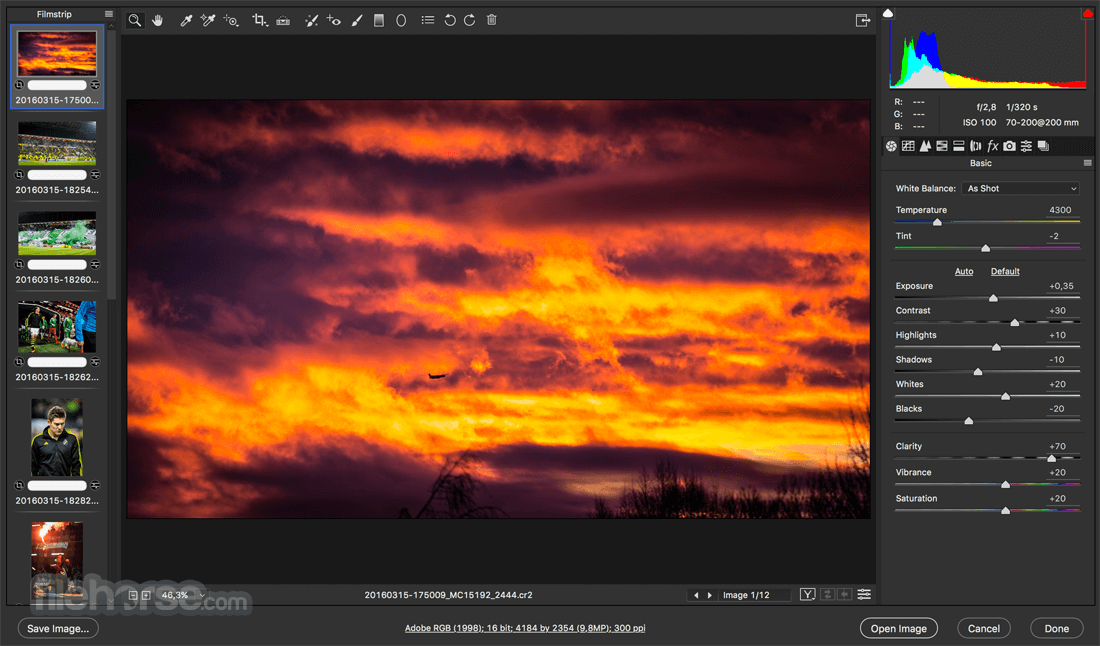

- #Adobe camera raw for mac cs6 how to
- #Adobe camera raw for mac cs6 update
- #Adobe camera raw for mac cs6 manual
Since the first release of Photoshop CC, it has also been possible to apply Camera Raw as a filter to RGB or greyscale images, in place of regular image adjustments such as Curves or Hue/Saturation. Since then Camera Raw has evolved to become a sophisticated image editor in its own right as well as providing the core image processing in Lightroom.
#Adobe camera raw for mac cs6 how to
Martin Evening shows you how to make best use of itĬamera Raw first began life as a plug-in for Adobe Bridge that allowed photographers to process their raw photos via Bridge, rather than rely on proprietary raw-processing software. Note: the Healing tools also displays previews when adjusting sliders.The excellent image editor Camera Raw can be used as a Photoshop filter. The Brush tool displays a preview when adjusting the size and feather sliders.The Eye icon (the Toggle Visibility button) was added to the Masking tool’s Light, Color, Curves, Effects, and Detail sections.There are three new presets in the Adaptive Portrait preset group: Darken Beard, Polished Portrait, and Enhance Clothes.Camera Raw now offers the ability to use AI/ML to automatically generate two new types of people masks based on facial hair (beard & mustache) and clothes.Updates to Masking - Camera raw has made several updates including people masking, presets, and previews. However you first run Denoise on any Bayer/X-Trans raw file, export the results to an output-referred format (such as TIFF), then running Super Resolution on that TIFF file.

While you can’t apply Denoise on images created by Photomerge, you can apply Denoise on the individual images before using Photomerge to create Panoramas and HDR images.Ĭurrently, Denoise and Super Resolution can not be used together. If the resulting image looks too smooth after running Denoise, use the Effects panel to add Grain.
#Adobe camera raw for mac cs6 manual
You can’t apply Denoise on an image more than once although you can return to the original raw file and apply Denoise using different settings.Īll of the legacy Manual Noise Reduction features are still available in the Detail panel if you want to add “additional” noise reduction, either globally or locally. Or, press Option (Mac) | Alt (Win) and click the Denoise button to apply Denoise to all selected images without displaying the Enhance dialog (Denoise will apply the same Amount value as the previous time Denoise was applied) To batch process images, select them in the Filmstrip and choose Denoise to adjust the Amount slider in the Enhance dialog.
#Adobe camera raw for mac cs6 update
However Camera Raw will automatically update any healed areas after applying Denoise. Content Aware Healing spots don’t preview in the Enhance dialog.Otherwise, enhancements that you’ve made (Sharpening and Texture for example), may need to be revisited after running Denoise. However I would suggest that you apply Denoise early in your workflow so that you’re making adjustments on the cleanest file possible. The enhanced DNG file is added to the filmstrip next to the source photo and Adobe Camera Raw will automatically target the new DNG (unless you’ve selected another file before the Enhance operation completed).ĭenoise carries over any enhancements made to the source image. When applying Denoise, the resulting file will be saved as a new DNG and the file name appended with “-Enhanced-NR”. Note: applying the minimum amount of Denoise will not look the same as unchecking the Denoise option because some aspects of noise reduction (especially color noise) are still applied when Denoise is enabled (even when the value is set to 1).

The default Amount is set to 50, but you can use the slider to tone down or amplify the amount of Denoise in an image. To reset the slider to the default of 50, double click on the tic mark.



 0 kommentar(er)
0 kommentar(er)
